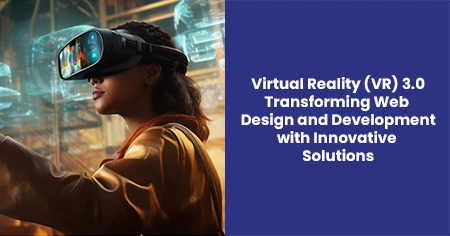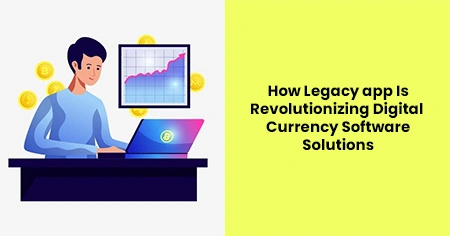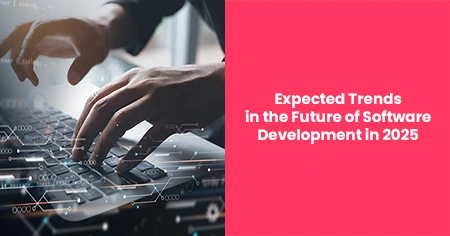The global Web 3.0 market was estimated at USD 2.2 billion in 2022, and it is expected to grow at a CAGR of 44.5% to USD 81.9 billion by 2032.
Consider a society where virtual and in-person relationships coexist and decentralized networks empower people beyond measure. People are looking into which technologies can completely revolutionize how they interact, produce, and collaborate.
Consider a society where virtual and in-person relationships coexist and decentralized networks empower people beyond measure. People are looking into which technologies can completely revolutionize how they interact, produce, and collaborate.
Talks about Web 3.0 are vital when the IT community and the internet are attempting to become acquainted with Metaverse. Furthermore, both concepts would have a significant long-term impact on the growth of connections. As a result, it is critical to evaluate the differences and their consequences for the future of the technological world. This article will explore virtual reality (VR) 3.0 and transform web design Philadelphia with innovative solutions.
What is Web 3.0?
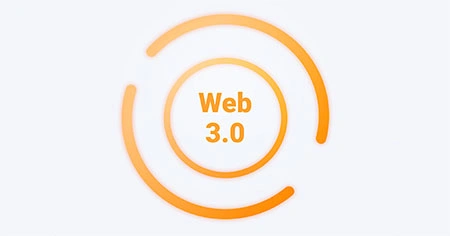
Web 3.0, often known as Web3, refers to the decentralization of the World Wide Web. It is the third iteration of web technology, which includes the W3 (World Wide Web). Web 3 is the foundational layer that facilitates internet use, including website and application services. Gavin Wood, a co-creator of the Ethereum Blockchain, proposed "Web 3.0" to remedy the flaws of Web 1.0 and Web 2.0, which were used from 1991 to 2004.
Key Features of VR 3.0 in Web Design and Development
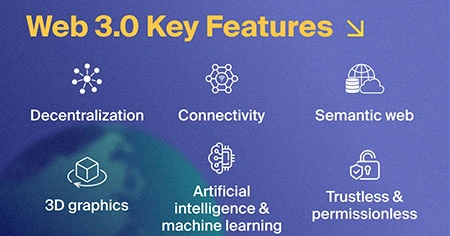
Web 3.0 development adds several major elements that distinguish it from its predecessors:
Web 3.0 uses blockchain technology to develop decentralized platforms and applications. This eliminates intermediaries and improves security, transparency, and user control.
Interoperability
Web 3.0 seeks to provide an interconnected environment in which data and services may communicate and interact fluidly across platforms, devices, and apps.
Machine learning and AI
Web 3.0 web development companies can use machine learning and AI to evaluate large volumes of data and provide tailored intelligent experiences.
Smart contracts
Web 3.0 uses blockchain-based smart contracts to automate and enforce transactions, removing the need for existing legal systems. Consult a Web3 attorney to ensure compliance and protect your interests when navigating blockchain and smart contracting issues.
Enhance user experiences
Web 3.0 focuses on providing consumers with personalized and immersive experiences using technologies such as virtual reality (VR), augmented reality (AR), and mixed reality (MR).
Innovative Applications of VR 3.0 in Web Design
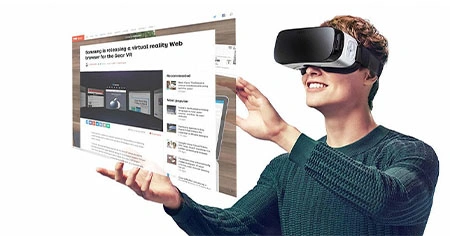
Web 3.0, with its decentralized and intelligent nature, has the potential to change many sectors and disciplines. Here are some important applications of Web 3.0:
Web 3.0 gives patients control over their health data using blockchain for safe and interoperable data transmission. It enables tailored medicine, telemedicine, and AI-based diagnostics. Patients can securely exchange their medical records with healthcare professionals, improving care coordination and outcomes.
Supply chain and logistics
Web 3.0 technology improves supply chain management using blockchain's transparency, immutability, and innovative contract features.
It allows for end-to-end traceability, provenance verification, and real-time monitoring of commodities. This increases supply chain efficiency, lowers fraud, assures ethical sourcing, and builds stakeholder confidence.
Decentralized finance (DeFi)
Web 3.0 allows for the establishment of decentralized financial systems without intermediaries. DeFi platforms powered by blockchain technology enable peer-to-peer lending, borrowing, and trading, as well as automated market-making and yield farming. These platforms challenge existing financial systems by providing greater financial inclusion, transparency, and security.
Content creation and intellectual property
Web 3.0 developers can pioneer new content development, distribution, and monetization approaches. Artists, writers, and developers can communicate directly with their audiences via decentralized platforms, skipping traditional intermediaries. Smart contracts can provide equitable pay, copyright protection, and transparent royalty distribution.
Internet of Things (IoT)
A seasoned Web3 development company combines IoT devices to enable smooth connection, data exchange, and automation. Decentralized IoT platforms allow for safe device interactions, data integrity, and privacy. This opens up the possibility of smart homes, smart cities, and networked ecosystems where devices communicate and transact autonomously.
Energy & sustainability
Web 3.0 can enable peer-to-peer energy trade, decentralized grid management, and efficient resource allocation. Blockchain and smart contracts allow the construction of energy marketplaces, which incentivize renewable energy production and consumption while encouraging sustainability.
Social Media and digital identity
Web 3.0 provides decentralized social media platforms that value privacy, data ownership, and user control. Users can control their digital identities, selectively share data, and manage online appearances. Smart contracts can mediate social media interactions, enabling transparent and secure engagement.
Gaming and virtual reality
Web 3.0 web design company can help construct decentralized gaming platforms where players own and freely exchange in-game assets. Virtual reality (VR) and augmented reality (AR) technology can provide immersive and participatory gaming experiences, blurring the line between the digital and physical worlds.
Education and eLearning
Web 3.0 development can transform education by offering individualized and adaptable learning experiences. Intelligent algorithms, machine learning, and AI-powered tutoring systems can deliver personalized instructional materials, exams, and feedback. Blockchain-based credentialing systems can help validate and verify educational achievements.
Governance and voting systems
Web 3.0 supports decentralized governance models in which decision-making processes are visible, auditable, and inclusive. Blockchain-based voting systems make elections more secure and tamper-proof, minimizing the possibility of fraud or manipulation.
Examples of VR in Web 3.0
VR technologies already have a huge influence in various industries, demonstrating the power of Web 3.0. Here are some instances.
VR in education: VR-based web platforms offer immersive learning experiences, allowing students to explore historical locations, conduct virtual experiments, and engage with complicated subjects in a more participatory way.
VR in entertainment: Web 3.0 elevates entertainment to new heights with AR and VR experiences. VR technologies revolutionize entertainment through interactive storytelling, virtual concerts, and games.
models that fully realize the potential of AR and VR in Web 3.0.
Challenges and Considerations in VR 3.0 Implementation
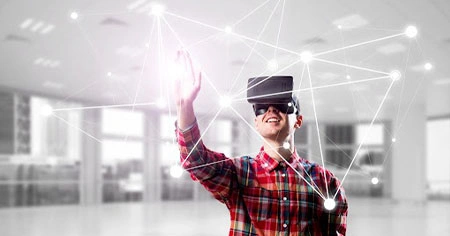
- Creating high-quality VR experiences requires significant investment in tools, talent, and technology.
- Ensuring VR environments run smoothly across devices without latency or glitches is a technical challenge.
- Web development companies must account for the varying capabilities of VR headsets, browsers, and devices.
- Maintaining robust security is critical as VR involves capturing user movements and interactions.
Future Trends of VR 3.0 in Web Design and Development
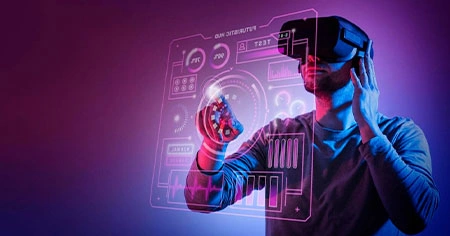
AI-Driven VR Content
AI integration will enable adaptive VR environments that evolve based on user behavior and preferences.
Social VR Platforms
The rise of social VR websites will facilitate community building and shared experiences.
5G and Beyond
The expansion of 5G networks will support faster, more responsive VR experiences, making them accessible to a broader audience.
Sustainability in VR Design
Developers will focus on creating energy-efficient VR solutions to address environmental concerns.




